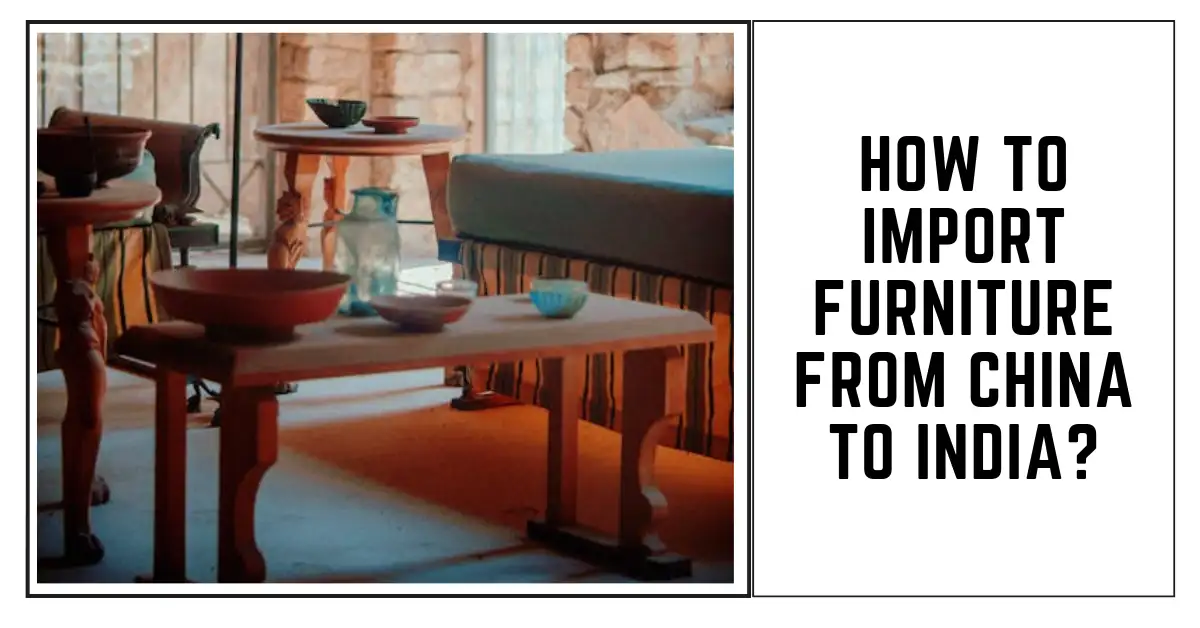HOW TO IMPORT FURNITURE FROM CHINA TO INDIA?
China is a global hub for furniture, offering diverse styles, mass production capabilities, and competitive pricing. But how can you, in India, import these items for personal or commercial use? A methodical approach ensures you obtain quality pieces in a timely, cost-effective way.
Steps to import furniture from china to india
Below, we detail the steps: from sourcing the right supplier to handling customs.
Step 1: Purpose
Are you a retailer aiming to stock multiple styles, or a homeowner wanting a specific statement set? China’s factories cater to large volumes, but small orders are also possible via certain platforms. List item types, like dining tables, sofas, or office chairs, and approximate your budget. A clear plan narrows down potential suppliers who can match your scale and style preferences.
VISIT FOR :: sourcing companies in usa
Step 2: Supplier Search
Browse platforms like Alibaba, Made-in-China, or check trade fairs (like Canton Fair) if you can travel. You’ll find big manufacturers and boutique producers. If you desire something unique, consider Suren Sourcing: though not Chinese, their industrial-luxe items can complement your chosen Chinese lines. Check each supplier’s experience with Indian buyers, prior knowledge helps with shipping formalities.
Step 3: Verification
Request catalogs, detailed photos, or sample pieces. Chinese manufacturers vary in quality, some produce top-tier items, others cheaper lines. Check wood type (solid vs. engineered), finishing, metal thickness, or upholstery grade. If ordering large volumes, weigh hiring a local QC agent for on-site checks. A thorough sample review ensures you avoid subpar shipments.
Step 4: Financial Terms
Costs hinge on materials, brand reputation, or customization. For big orders, inquire about volume discounts. Define incoterms, FOB (supplier handles goods to the port) or CIF (supplier arranges freight to your destination port). Partial deposits are typical, with the remainder upon shipping or after final inspection. If your order is significant, a letter of credit can add security for both sides.
Step 5: Freight Options
For large volumes, sea freight from Chinese ports (like Shenzhen, Ningbo, or Shanghai) to Indian ports (e.g., Mumbai, Chennai) is standard. Smaller loads might go LCL (Less than Container Load), though the rate per cubic meter can be higher than full container. A freight forwarder orchestrates container booking, customs docs, and final local transport. Ensure robust packaging, like crates or padded boxes, so your items arrive damage-free.
Step 6: Indian Import Rules
Import duties on furniture vary, check the correct HS code. Some items might face additional surcharges or require certificates (like fumigation for wooden pieces). You’ll typically need a commercial invoice, packing list, Bill of Lading, plus any compliance docs. A broker or forwarder can assist with these steps, smoothing port clearance.
If you combine lines from Suren Sourcing or other domestic sources, confirm you’re handling each shipment’s paperwork accurately.
VISIT FOR :: furniture sourcing companies in india
Step 7: Scheduling
Manufacturing in China can span weeks or months for custom or large-scale orders. Add sea shipping time (2–6 weeks) plus possible port delays. If you have a store launch or personal move-in date, plan well in advance. Hurrying might incur rush fees or quality dips, so a buffer is wise.
Step 8: Final Checks
Ask for final photos or a virtual video tour of your packed order. If you have a large order, a third-party QC agent can confirm color, finishing, or quantity. Spotting errors before container loading is simpler than dealing with them post-arrival. Document your specs (like “dark walnut finish” or “metal frame thickness”) to resolve any mismatch claims.
Question: Full Container or Partial?
Large orders might fill a 20ft or 40ft container, reducing freight cost per piece.
Smaller ones share a container with other cargo. If you can’t fill a container alone, LCL remains an option, just factor the higher rate. Alternatively, you might collaborate with another importer or combine shipments from multiple suppliers.
Step 9: Arrival
Once cargo reaches port, your customs agent or broker files for clearance. Duties, taxes, or port fees must be paid. After clearance, local transport (truck or rail) takes it to your location. Inspect the items swiftly for transit damage, photos help if you must file a complaint or insurance claim.
Blending Chinese and Other Lines
You might combine Chinese items with Suren Sourcing industrial pieces for a diverse product range or a unique home interior. A freight forwarder can coordinate multiple shipments if you have enough volume. Just ensure each brand properly labels boxes to prevent confusion upon arrival. This synergy can expand your store or personal style variety.
Conclusion
Importing furniture from China to India can bring broad design options and cost savings. Following a structured plan, supplier research, sample checks, shipping coordination, and customs compliance, reduces pitfalls. Suren Sourcing or other local lines can complement your Chinese imports for a more eclectic offering. Stay mindful of production times, shipping schedules, and thorough quality control. With patience and clarity, your new furniture can arrive safely, elevating your home or retail space with global flair.
READ MORE :: Top 10 Furniture Procurement Companies








No comment yet, add your voice below!